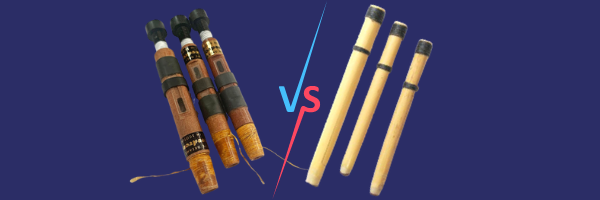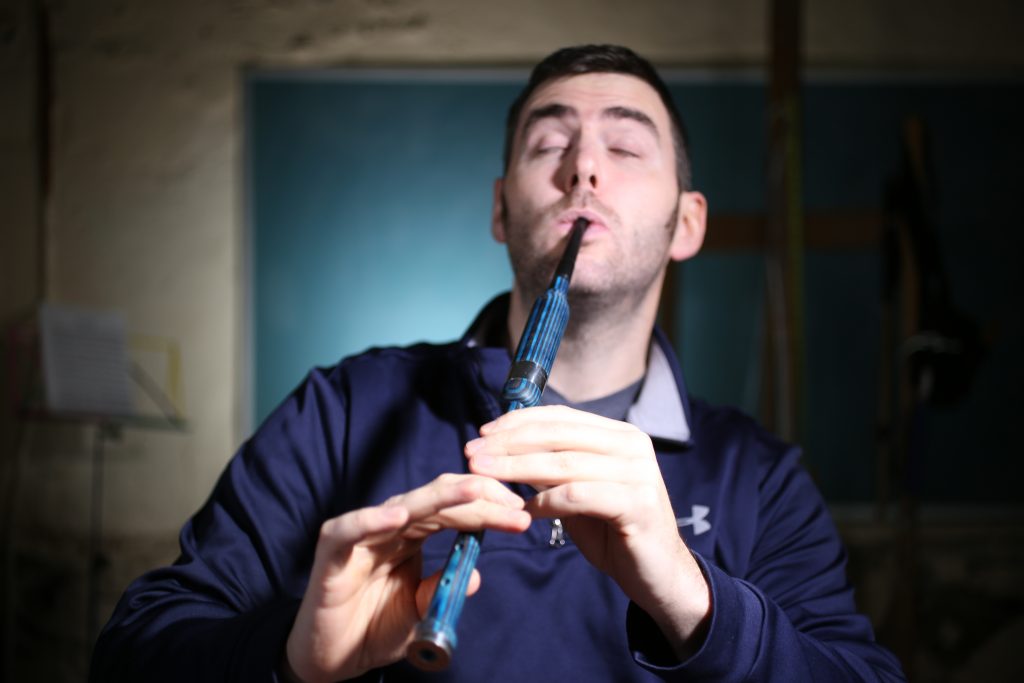Which Drone Reeds are Better, Cane or Synthetic?

The short answer: Neither. What is “better” is going to be different for every piper and depend on several personal factors.
Many pipers will argue that nothing compares to the classic sound of a set of cane drone reeds humming away. Other pipers will claim that you can produce just as great a sound with synthetic drone reeds. Still other pipers might not be able to distinguish the sound of cane from synthetic at all – they just know what they like. Though, these days, as many top solo piping prizes have been won with synthetic drone reeds as with cane or a combination of the two. From an audience appreciation perspective, both types of reeds are capable of producing a wonderful sound.
Today’s cane drone reeds are well made and refined. They are the type of reed the bagpipe was designed to play and are "traditional" in every sense. Today’s synthetic drone reeds are indeed modern marvels. They are designed to sound good in just about any stand of drones and have reached a point where they sit together with cane reeds (a design which has not changed in centuries) as viable choices to achieve the sound of your desires. It is not so much which is “better,” but what is the best choice for you given the answers to the following:
- What are my performance needs?
- How does moisture effect me and my instrument?
- How much work does it take to keep the reeds working well?
What are my performance needs?
The answer to this question will move you toward a choice to get the quality of sound you desire from your drones. That will depend though, on the types of performance situations at which you mostly play. Each situation will have demands that might mean you will get the best result with synthetic over cane, or vice versa.
Are you a competitive soloist? You might desire a particular quality of sound with a particular projection and balance to your chanter. Cane reeds produce a “classic” sound that is appreciated by many pipers and adjudicators. Synthetics can provide different sound quality over a continuum of “bold” to “mellow” with overtones that blend better with some chanters/reeds, or might work well when played in combination with cane. It will really depend on your own preferences and taste, what sounds best in your particular drones, and what kind of overall sound you wish to produce. Today’s top solo pipers play a wide range of synthetic reeds, cane reeds, or a combination of the two. Personal reed differences piper to piper will often introduce new color and distinctive character to that player’s sound.
Are you primarily a band player in parades and/or competitions? Some bands might demand that you play a certain type of reed. Pipe bands generally strive for a more uniform, robust sound with greater drone projection and stability. Some synthetic drone reeds provide these aspects and tend to be more reliable in the context of the pipe band competition circle, when all pipers need to be performing at the same level of efficiency and consistency. Higher grade competition bands have been known to play cane drone reeds in order to achieve a distinct sound quality that sets them apart.
Are you a solo gig piper who needs to have their instrument ready to play at a moment’s notice, and sounding pleasant when you do? Cane reeds are effected by the variables of temperature and moisture in a way that might make them unreliable for the gig piper. Many synthetic reeds provide reliability and consistency, things that will keep a gig piper sounding good with minimal warm up time, in different conditions, when its needed.
How does moisture affect me and my instrument?
It is well known that too much moisture build up in your bagpipe has a negative effect on your sound. It is not uncommon today for pipers who consider themselves “wet” blowers, or who play in wet climates, to experiment with different pipe bags and moisture control apparatus to address their moisture troubles and extend their playing time. Moisture issues might also influence the type of drone reed you play.
Does a lot of moisture build up over a short period of time when you play? If your answer is “yes,” cane drone reeds might not be “better” for the sake of efficiency and stability. Unless you are experienced with an arsenal of tricks to keep a set of cane drone reeds going in all conditions, you will likely only experience frustration with cane if wetness is an issue for you. A set of synthetic drone reeds that is known to handle large amounts of accumulating moisture and still remain stable will extend your playing time. It will take away unwanted frustration and free you up to focus on actually playing the bagpipe.
If moisture build-up is not an issue (lucky you!), or if it is managed effectively with your bag set up, either cane and synthetic drone reeds should prove reliable. Which one you feel is “better” will be a matter of taste given your performance needs (see above), or your experience level (see below).
How much work does it take to keep them working well?
Working with cane drone reeds is a sort of occult art. One needs to be no less adept when working with synthetic reeds. Each have their requirements and quirks, all of which must be known and understood by the piper if he or she is to get the most out of them. Every drone reed is subject to the variables that affect their performance: condensation; temperature; time; climate, frequency of play, storage and maintenance. Each type responds to these variables differently. How much you currently know about manipulating drone reeds to manage these variables generally might determine which type is “better” for you.
Cane reeds require management of all the above mentioned variables. The form of the cane drone reed has been the same for several hundred years. Over that time, a host of general tricks and techniques have evolved to manage them. The modern era gives us new materials to “assist” their functioning and apply consistent care and treatment. They also require frequent play to maintain. Learning all of these tricks though, requires time, practice, and patience. If that is something that appeals to you, have at it! If though, you do not wish to deal with this learning curve, then playing cane drone reeds could be counterproductive, taking away valuable practice time and interfering with performance. Even the most experienced and accomplished pipers will tell stories of stopped cane bass drones during solo performances, or misfired reeds in a band attack. All the tricks and tips in the world are sometimes still not enough to keep a cane drone reed from misbehaving. For some pipers though, it is worth all the effort and risk to achieve that wonderful, classic drone sound.
The evolution of the synthetic drone reed brings a reduction in the impact the above variables have on the reed’s performance. These reeds can also reduce the amount of work it requires to get them set and keep them playing well. Each make of synthetic reed is slightly different and each requires a unique new set of techniques and body of knowledge to keep them functioning properly. Synthetic reeds are designed to be fairly easy to set up, calibrate, and tune. They also do not require as frequent playing to perform consistently. They are good reeds for beginning and intermediate pipers as they can be more stable than cane reeds, will keep working with application of some rudimentary techniques, and thus get a beginner piper up and playing right away. The less time spent messing with drone reeds leaves more time for practicing proper bagpipe playing on a good sounding instrument. When properly set up with the right techniques, synthetic drone reeds can be fairly maintenance-free for the time they last. They also can produce a wonderful sound and, as mentioned, are played in the drones of today’s top solo pipers and pipe bands.
Take Action
- Master instrument maintenance and drone reed setup with our Transitioning to the Bagpipes Course
- Learn how to properly hemp your drone reed seats
- Explore whether some drone reeds are more efficient than others
- Learn more about drone reed calibration






Responses